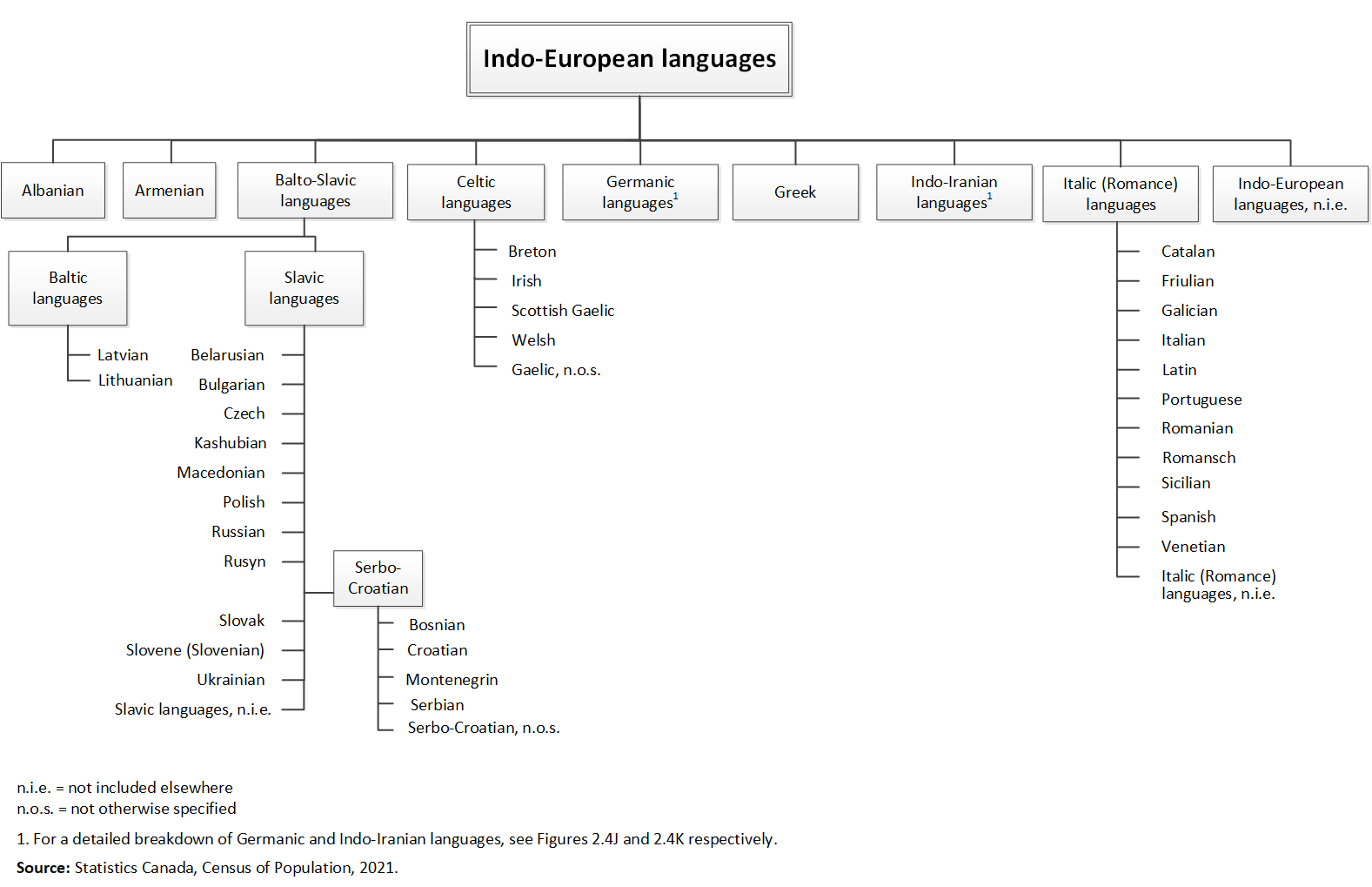Dictionary, Census of Population, 2021
Figure 2.4E
Indo-European languages

Description for Figure 2.4E
Figure 2.4E provides an overview of the Indo‑European languages component. The Indo‑European languages component is broken down into nine major branches, including: Albanian, Armenian, Balto‑Slavic languages, Celtic languages, Germanic languages,Footnote 1 Greek, Indo‑Iranian languages,Footnote 1 Italic (Romance) languages and Indo‑European languages not included elsewhere. Albanian, Armenian, Germanic languages, Greek, Indo‑Iranian languages and Indo‑European languages not included elsewhere are not broken down further.
By contrast, Balto‑Slavic languages are broken down into: Baltic languages which include Latvian and Lithuanian; Slavic languages which include Belarusian, Bulgarian, Czech, Kashubian, Macedonian, Polish, Russian, Rusyn, Bosnian, Croatian, Montenegrin, Serbian, Serbo‑Croatian not otherwise specified, Slovak, Slovene (Slovenian), Ukrainian and Slavic languages not included elsewhere.
Celtic languages include: Breton, Irish, Scottish Gaelic, Welsh and Gaelic not otherwise specified.
Italic (Romance) languages include: Catalan, Friulian, Galician, Italian, Latin, Portuguese, Romanian, Romansch, Sicilian, Spanish, Venetian and Italic (Romance) languages not included elsewhere.
Source: Statistics Canada, Census of Population, 2021.
- Date modified:
